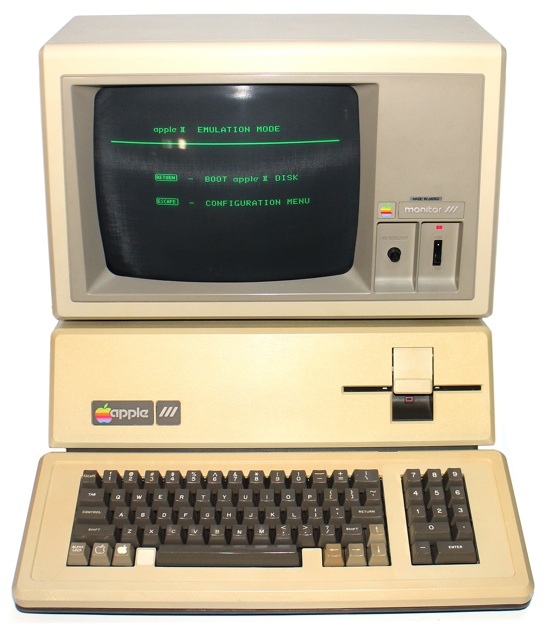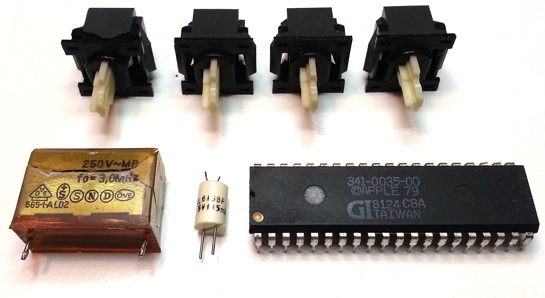Apple III (Apple ///)

Repairs and calibrations made:
- After a few days of normal use of the Apple /// is died the Keyboard Encoder (341-0035-00). I have replaced the chip with the Keyboard Encoder SMC KR3600-075B1 which fortunately is still available.
- Removed the filter capacitor.
- Replaced the bulb of the power-on that is embedded in the keyboard.
- Replaced all rubber feets.
- Calibration of the Floppy Drive.
- Replaced some switches of the keyboard.

Repairing keyboard Apple ///:
It seems incredible but there is always a button that doesn’t work ;-D
I found on some keyboards of the TI-99/4A the same buttons but with the plunger much smaller. I have used the plunger of the Apple /// button on the TI-99/4a button and i have fixed the problem elegantly ;-D
Thank to my friend Ninetyniner Iuc for the donation of spare parts.
Gallery:
The Apple III (often rendered as Apple ///) is a business-oriented personal computer produced and released by Apple Computer that was intended as the successor to the Apple II series, but was largely considered a failure in the market. Development work on the Apple III started in late 1978 under the guidance of Dr. Wendell Sander. It had the internal code name of “Sara”, named after Sander’s daughter. The machine was first announced and released on May 19, 1980, but due to serious stability issues that required a design overhaul and a recall of existing machines, it was formally reintroduced the following autumn. Development stopped and the Apple III was discontinued on April 24, 1984, and the III Plus was dropped from the Apple product line in September 1985.
The Apple III could be viewed as an enhanced Apple II – then the newest heir to a line of 8-bit machines dating back to 1976. However, the Apple III was not part of the Apple II line, but rather a close cousin. The key features business users wanted in a personal computer were a true typewriter-style upper/lowercase keyboard (as opposed to the Apple II which was based on a teletype keyboard) and 80 column display. In addition, the machine had to pass U.S. Federal Communications Commission (FCC) Radio Frequency Interference (RFI) qualifications for business equipment. In 1981, International Business Machines unveiled the IBM Personal Computer (IBM PC) – a completely new 16-bit design soon available in a wide range of inexpensive clones. The business market moved rapidly towards the PC DOS/MS-DOS platform, eventually pulling away from the Apple 8-bit computer line.
Despite numerous stability issues and a recall that included the first 14,000 units off the assembly line, Apple was eventually able to produce a reliable and dependable version of the machine. However, damage to the computer’s reputation had already been done and it failed to do well commercially as a direct result. In the end, an estimated 65,000–75,000 Apple III computers were sold. The Apple III Plus brought this up to ~120,000. Apple co-founder Steve Wozniak stated that the primary reason for the Apple III’s failure was that the system was designed by Apple’s marketing department, unlike Apple’s previous engineering-driven projects. The Apple III’s failure led to Apple reevaluating their plan to phase out the Apple II, and eventual continuation of development of the older machine. As a result, later Apple II models incorporated some hardware, such as the Apple Scribe Printer, a thermal printer, and software technologies of the Apple III.
source: wikipedia














Recent Comments